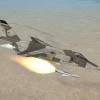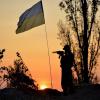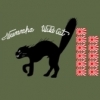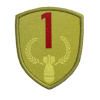Regarding my old Aircraft Ini Data Editor: TK kept issuing patches refining the flight model, so I had to keep editing my application to account for the new features. At some point, I introduced a bug that broke the functionality of saving/opening multiple documents (a memory leak? or a problem with the serialization routines for opening/closing documents?). I had already lost the previous working version of the source code and didn't have the time or energy to figure out what was broken. So, I abandoned further development quite some time ago.
SF2 data ini files have similar, but larger more detailed tables. If my program was set up correctly, it would automatically handle the larger tables. But TK may have added more features or changed how the data was being used by the game engine. As programmed, it would throw away any data it didn't recognize and only process the variables it was programmed to read. I would use debug mode to try to verify my lift and drag equations. But that was so many years ago.
What AIDE did was read in all of the pertinent flight model information and solve for specific aerodynamic values to produce tables similar to those found in flight manuals. So, you could tweak a flight model parameters in the data ini files and see how it affected performance. It could not take performance tables and turn them into ini data tables. So, you had to have some insight into how all of the variables interacted to make useful changes. With a re-iterative trial and error process, you could build a flight model that would reasonably replicate flight manual performance tables. In particular, you could strive to replicate specific excess power, instantaneous turn performance, and sustained turn performance. This also meant realistic stall speeds and climb rates. If you could get NASA data on some of the drag or lift parameters, you could build a flight model superior to what most sims offered at that time. Some people look down on using lookup tables for flight model data, but the fact is if the tables have high enough resolution and have accurate numbers, there is no more realistic or faster way to model flight.
I would love to make a new version of AIDE that leverage modern hardware for better performance and was 100% compatible with SF2 without any bugs/memory leaks. But it has been a long time since I programmed at that level and I don't have the time or energy it takes to get such a project done in any reasonable time. After all the work I did on it, the only thing I ever produced was an F-4B flight model tailored to the flight model engine as of SFP1 SP2a patch level, and that was partially broken after the release of Wings Over Vietnam. I have learned to accept that PC flight sims are never going to be as realistic as I would like them to be and I would rather spend my time flying in sims than reverse engineering and attempting to improve them.
SFP1/WoX/SF2 had one principal competitor, LOMAC. LOMAC had some awesome terrain graphics quality compared to SFP1/SF2, particularly the water. But its flight models were horrible. Its modern evolution, DCS World, now has flight models that are extremely complex and detailed as well as being among the most realistic/accurate you can get on a PC today. I no longer chart data from the game and perform calculations to compare the results with flight manual tables. As long as the aircraft flies reasonably close to the descriptions in the flight manuals, I am pretty happy. The problem with DCS World is that it takes a lot of time and money to produce accurate flight and systems models, so there will never be as many flyable aircraft types/variants compared to SFP1/SF2.



















